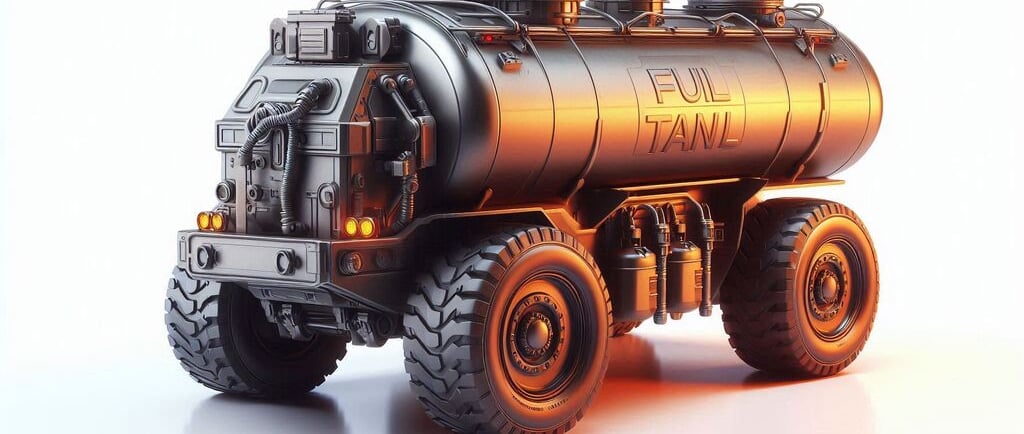Fuel Tank: Stores fuel for the vehicle.
Imagine setting out for a long drive only to find your car sputtering halfway to your destination.
FUEL SYSTEMS
11/13/20244 min read


Understanding the Fuel Tank: Essential Fuel Storage for Your Vehicle
Imagine setting out for a long drive only to find your car sputtering halfway to your destination. One key component makes sure you never face this issue: the fuel tank. It’s more than just a container; the fuel tank is crucial in ensuring your vehicle runs smoothly, providing the engine with a steady fuel supply.
In this article, we’ll break down everything you need to know about fuel tanks, from how they work to tips on keeping them in optimal condition. Whether you're a seasoned driver or a curious car enthusiast, understanding the fuel tank's role can help you get the most out of your vehicle.
What is a Fuel Tank?
A fuel tank is the part of your vehicle responsible for storing fuel until it’s needed by the engine. Most commonly located under the rear or side of the vehicle, the fuel tank has a secure, sealed structure to hold liquid fuel safely and effectively.
Components of a Fuel Tank
A fuel tank is more than a simple container; it includes several critical parts that ensure your car receives fuel when it’s needed:
Fuel Pump: Moves fuel from the tank to the engine.
Fuel Filter: Removes impurities from the fuel before it reaches the engine.
Vent System: Allows pressure to equalize, avoiding a vacuum effect as fuel is used.
Together, these components ensure that fuel flows smoothly from the tank to the engine for consistent vehicle performance.
How Does the Fuel Tank Work?
The fuel tank is the first stop in the fuel delivery process. Here’s a quick rundown of how it works:
Fuel Storage: Fuel is pumped into the tank via the fuel filler pipe, which has a cap to prevent leaks and spills.
Fuel Pump Activation: When the engine is running, the fuel pump draws fuel from the tank and sends it to the engine.
Fuel Level Monitoring: A fuel level sensor inside the tank connects to your dashboard’s fuel gauge, letting you know when it’s time to refill.
The fuel tank works quietly behind the scenes to keep your car powered and ready for any journey.
Types of Fuel Tanks
Fuel tanks come in various types, each suited to different vehicle needs. Here are a few common types:
1. Plastic Fuel Tanks
Plastic fuel tanks are popular due to their lightweight and corrosion-resistant properties. Made from high-density polyethylene, these tanks are durable, and they can often be molded into complex shapes to maximize fuel storage in limited spaces.
2. Metal Fuel Tanks
Metal tanks, usually made of steel or aluminum, are known for their durability and resistance to damage. However, they are heavier than plastic tanks and can be prone to rust if not properly maintained.
3. Reserve Fuel Tanks
Some vehicles, especially larger trucks or off-road vehicles, have reserve fuel tanks to extend their driving range. Reserve tanks provide extra fuel capacity, ideal for long journeys where refueling stations are scarce.
Why Fuel Tank Maintenance is Important
A well-maintained fuel tank not only ensures your car runs smoothly but can also save you money and prevent costly repairs down the road. Here are some benefits of regular fuel tank maintenance:
Improved Fuel Efficiency: Clean fuel tanks and filters help the engine perform optimally, leading to better fuel economy.
Extended Fuel Pump Life: Contaminants in the fuel can wear out the fuel pump. Regular cleaning prevents clogs and extends its lifespan.
Avoiding Rust and Corrosion: Rust can weaken the tank, leading to leaks or a fuel tank replacement. Keeping your fuel tank full can help prevent moisture buildup and rusting.
Tips for Fuel Tank Maintenance
Refuel Before the Tank Gets Too Low: Avoid running your car on a nearly empty tank, as this can cause sediment to clog the fuel filter.
Use Quality Fuel: High-quality fuel helps reduce the buildup of contaminants in the tank.
Regular Inspections: A mechanic can check your fuel tank, pump, and filter during routine services.
Common Fuel Tank Issues
Like any other car part, fuel tanks can experience problems. Here are some common issues and how to spot them:
1. Leaks
Fuel tank leaks are a serious issue that can cause safety hazards and environmental concerns. If you notice a strong fuel smell or puddles under your vehicle, it may indicate a leak.
2. Clogged Fuel Filter
Over time, impurities and sediment can clog the fuel filter, reducing fuel flow to the engine. Signs of a clogged filter include difficulty starting, poor engine performance, and decreased fuel efficiency.
3. Fuel Pump Failure
A faulty fuel pump can leave you stranded. Symptoms include engine sputtering at high speeds or sudden stalling. Regular inspections can catch this issue early, potentially saving you from an unexpected breakdown.
How to Choose the Right Fuel Tank for Your Vehicle
If you ever need a replacement fuel tank, knowing which type to choose is essential. Consider these factors:
Material: Opt for plastic if you want a lighter, corrosion-resistant option. Metal tanks are better suited for heavy-duty vehicles.
Capacity: Make sure the tank fits your driving needs. For long trips or remote locations, a higher capacity or reserve tank can be beneficial.
Compatibility: Always consult your vehicle's manual or a trusted mechanic to ensure you select a fuel tank compatible with your make and model.
Conclusion: Fuel Tank Basics Every Driver Should Know
The fuel tank plays a crucial role in powering your vehicle and keeping it ready for the road. From selecting the right tank material to performing regular maintenance, understanding your fuel tank’s role and needs can enhance your vehicle’s longevity and performance.



